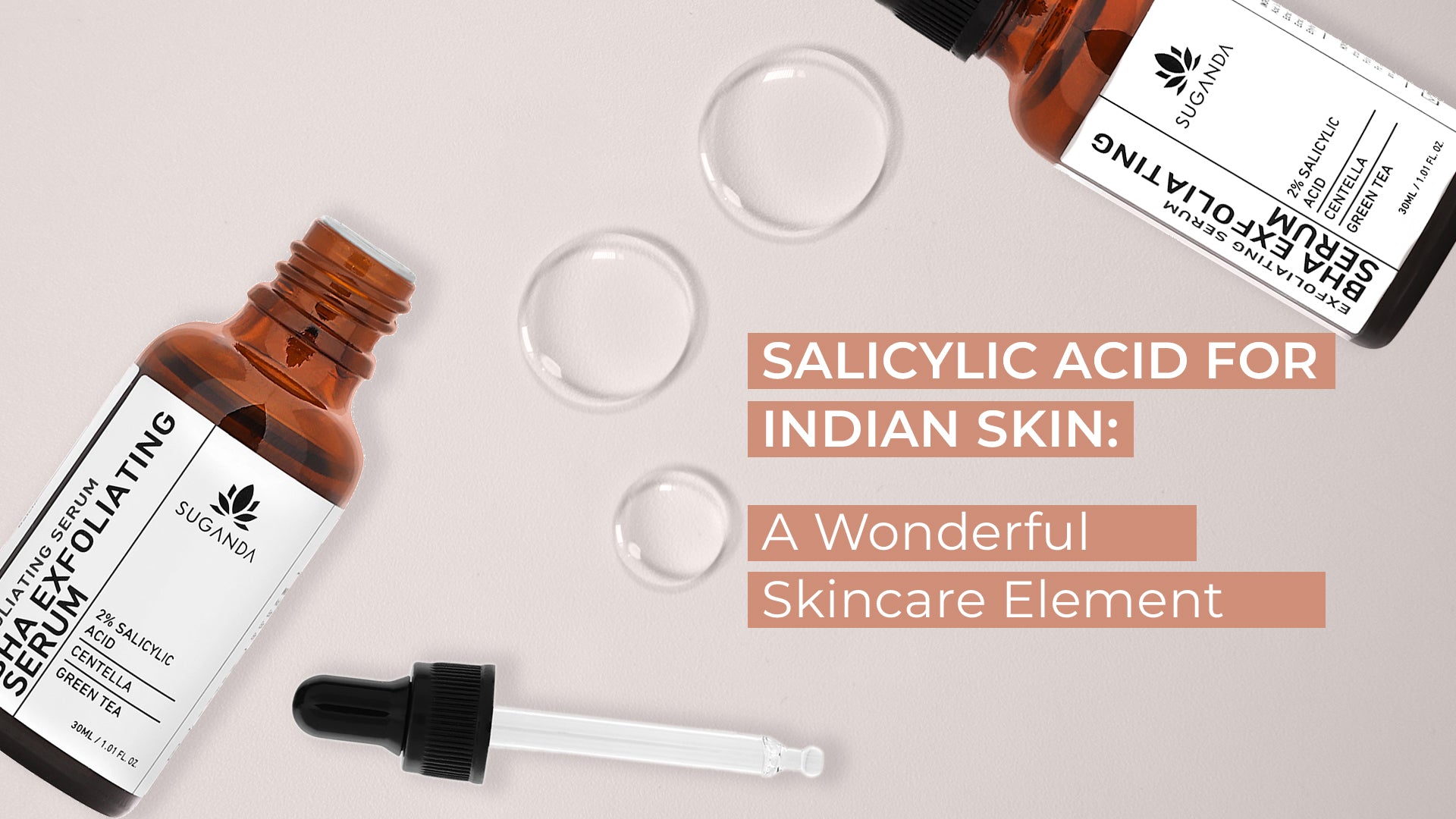Written by Dhatri
Similar to the fact that acne is the biggest enemy of the skin, salicylic acid is the best friend of acne. Take any skin product off the market and you will find salicylic acid as one of the ingredients in it. It is one of the most widely used ingredients in the cosmetic industry and also by physicians who prescribe it for medication.
Many cosmetics, right from toners to moisturisers and peels to acid lotions, contain salicylic acid. It is an excellent exfoliant that penetrates deep inside the pores to give you beautiful, even-toned skin. This powerful ingredient is said to be a great gift for Indian skin.
Of course, it helps every skin type, and that’s the reason it's used in every cosmetic product. But why is it especially great for Indian skin?
To understand that, let's look at what salicylic acid does.
What is salicylic acid?
Salicylic acid is a beta-hydroxy acid and it belongs to the class of ingredients called salicylates. This acid can be naturally found in sweet birch bark, willow bark, and wintergreen leaves. It is also said to be found in some fruits and vegetables. The exfoliant plays a vital role in removing dead cells and penetrates deep into the pores to treat acne.
Salicylic acid is one of the most popular acne-fighting ingredients.
How does it benefit the skin?
Salicylic acid is a powerful exfoliant that eliminates dead skin cells from the surface and unclogs the pores. It helps in cleaning the skin cells. Salicylic acid reduces sebum production to make the skin look less oily and less prone to acne breakouts. It is used to treat acne breakouts and psoriasis, prevent blackheads and whiteheads and remove corns, warts, dryness, and scaling. In a nutshell, salicylic acid protects the skin from all possible skin problems and gives an even and bright complexion.
How does salicylic acid work for different skin types?
Salicylic acid is best suited for all skin types, especially oily and acne-prone skin. Since this ingredient contains anti-inflammatory properties, it is suitable for people with acne-prone and oily skin since it helps reduce inflammation, soothe the skin, and prevent new breakouts.
Does salicylic acid cure acne, blackheads, whiteheads, and pimples?
Salicylic acid is an effective ingredient in treating acne and preventing acne breakouts. It deeply penetrates the skin by unclogging the pores, cleaning the excess sebum and reducing oiliness.
Salicylic acid keeps the pores clean and prevents blackheads and whiteheads from returning to the surface.
It also minimises the appearance of pores and breaks down sebum, the oil found in the body that causes pimples. It is a supreme exfoliant, giving you healthy skin.
Why do Indians need salicylic acid for their skincare routine?
Knowing the structure of salicylic acid will help you understand its benefits for Indian skin, as this answers 70% of the questions.
Salicylic acid belongs to the beta-hydroxy acid family, which means that the hydroxyl part (i.e., the water molecule) is separated from the acid part by two carbon atoms. Due to its structure, salicylic acid is more oil-soluble, making it easier to penetrate the pores of the skin. Salicylic acid is purely oil-soluble. It is the most important reason that salicylic acid is ideal for Indian skin. Asian skins produce a lot of sebum (oil), particularly Indian skin. These oil-soluble ingredients can penetrate deep into the oily skin and exfoliate the skin, preventing acne, blackheads, whiteheads, and inflamed skin. It has both antimicrobial and antifungal properties, which work great on acne and rejuvenate the skin without leaving a wound on the skin.
Bottom line:
Salicylic acid takes up a safe and secure space in the skincare routine. It is a boon for people with oily and acne-prone skin.
But, it is always advisable to consult your physician if you think your skin is prone to allergens. People with dry skin can use it with a low concentration to be on the safe side.
Sources:
“Management of Acne - PMC.” PubMed Central (PMC), www.ncbi.nlm.nih.gov, 19 Apr. 2011, https://www.ncbi.nlm.nih.gov/pmc/articles/PMC3080563/.
“Treatment of Acne Vulgaris With Salicylic Acid Chemical Peel and Pulsed Dye Laser: A Split Face, Rater-Blinded, Randomized Controlled Trial - PMC.” PubMed Central (PMC), www.ncbi.nlm.nih.gov, 1 Jan. 2015, https://www.ncbi.nlm.nih.gov/pmc/articles/PMC4688384/.
“Topical Azelaic Acid, Salicylic Acid, Nicotinamide, Sulphur, Zinc and Fruit Acid (Alpha‐hydroxy Acid) for Acne - PMC.” PubMed Central (PMC), www.ncbi.nlm.nih.gov, 1 May 2020, https://www.ncbi.nlm.nih.gov/pmc/articles/PMC7193765/







 +91 9347578980
+91 9347578980
